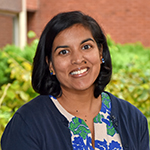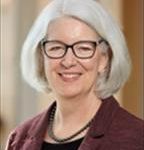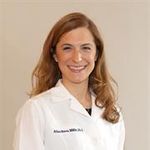MD and PA Students Learn Together in Team-based Approach
Boston University Chobanian & Avedisian School of Medicine is one of just two medical schools nationally where physician assistant students (PA) and medical students (MD) attend classes together for an extended period of their education. In the past at BU, the PAs would take foundational science courses like biochemistry, physiology and gross anatomy separate from medical students and join them for the pathophysiology course.
This year, the entering classes of PAs and MDs started at the same time in August with 18 months of combined classes taught under a new team-based learning approach – a new curriculum launched last year for medical students – that integrates foundational sciences and pathology. This team-based learning closely mirrors the cooperative approach they will encounter in their careers.
 “Teamwork is foundational to the curriculum, and our physician assistants have a lot of work experience, many in health care. Some, but not all, of our medical students have that,” said Priya Garg, MD, Associate Dean for Medical Education. Garg said PAs and nurse practitioners are helping to fill the ever-widening shortage of primary care physicians as more doctors gravitate to specialties.
“Teamwork is foundational to the curriculum, and our physician assistants have a lot of work experience, many in health care. Some, but not all, of our medical students have that,” said Priya Garg, MD, Associate Dean for Medical Education. Garg said PAs and nurse practitioners are helping to fill the ever-widening shortage of primary care physicians as more doctors gravitate to specialties.
The PA position was created in the 1960s in response to a physician shortage that continues today, and initially employed many post-Vietnam War medical corpsmen. There are 304 PA education programs in the U.S. and the curriculum also includes over 2,000 hours of clinical rotations. There is no residency requirement.
 BU started it’s PA program in 2013, in part due to the need for more PAs at Boston Medical Center, said Susan White, MD, an assistant professor of obstetrics & gynecology and director of the PA program.
BU started it’s PA program in 2013, in part due to the need for more PAs at Boston Medical Center, said Susan White, MD, an assistant professor of obstetrics & gynecology and director of the PA program.
 “There’s more need for the PA profession because it’s a cost-effective way of providing care. Physicians alone can’t keep up with the demand for medical care,” said Aliza Stern, MMS/MMSc, director of didactic education for the physician assistant program.
“There’s more need for the PA profession because it’s a cost-effective way of providing care. Physicians alone can’t keep up with the demand for medical care,” said Aliza Stern, MMS/MMSc, director of didactic education for the physician assistant program.
A 2020 Association of American Medical Colleges report predicted a shortage of between 54,100 and 139,000 primary care physicians by 2033. The Affordable Care Act enacted in 2010 created greater access to health insurance and to health care, helped spur demand for PAs with a 34% growth in licensed PAs since 2006 and a 38% increase in PA jobs predicted as necessary over the next decade to meet need, according to the U.S. Dept. of Labor.
The prerequisites for medical school and admission into a PA program are very similar, said White. Initially, there was some concern about PA students keeping up academically, but their track record on other combined courses demonstrated their competency.
“We’ve had the PAs in the second-year DRX (Disease and Therapy) course for a long time and their performance has been pretty equivocal to the MD students,” said Garg.
Physician assistants fall under the supervision and direction of licensed physicians and that has helped create a team philosophy and approach at the clinical level. But there still is a sense of unfamiliarity and medical and PA school administrators hope the new team-based learning approach will break down some of those barriers.
“Most MDs have very little understanding of what other people in health care do until they’re pretty far along in their residency, which is a detriment to being successful in treating patients,” said Garg. “The fact that they’re sitting next to someone who is training in the PA program will help them to understand what a PA is and hopefully undo some of the bias that exists. In clinical practice, it’s much more about teamwork and everyone contributes their expertise.”
PA students go directly from graduation into clinical settings and BU’s PA program has a lot of appeal to prospective students, said Stern, because of the challenge and academic rigor associated with it being taught at a university medical school.
“It is really important for PA students to have a really good foundation of medical knowledge,” said White. While other PA programs may have instructors teaching classes outside their specialties, BU can call upon specialists in all fields, including a robust research community, medical school faculty and physicians at Boston Medical Center. It made no sense having two separate programs teaching the same courses, said White.
“The right thing to do was to join them,” she said.
View all posts